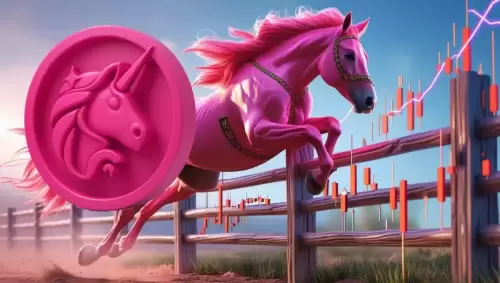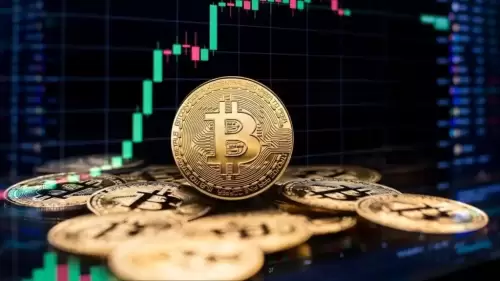 |
|
 |
|
 |
|
 |
|
 |
|
 |
|
 |
|
 |
|
 |
|
 |
|
 |
|
 |
|
 |
|
 |
|
 |
|
加密货币新闻
Welcome to the Meme Coin Culture: A Beginner's Guide to Riding the Waves of Viral Crypto
2025/05/14 14:11

If you've ever skimmed through X (formerly Twitter), you've likely encountered them: images of cartoon frogs, flashy numbers, and wild claims in the caption like "I turned $147 into $932,098 with meme coins this year."
It might make you feel like you're missing out on some secret internet money club. Enter the meme coin culture.
These digital currencies, named after funny online content, trends, and jokes, are quickly gaining attention for their playful essence and potential for quick gains. But like any investment, it's crucial to approach with caution and an understanding of the risks involved.
According to Estonia-based blockchain consultancy BDC, more than 40,000 meme coins are being created daily online, inspired by online memes or trending events. Meme coins have existed since 2013, but they started gaining traction in 2021 and 2022.
This post will cover how meme coins work, the reasons behind their sensation as crypto’s crazy bubble, how to trade, and cautions to take, as advised by successful meme traders.
What are Meme coins?
Alt: memecoin trading dashboard
Meme coins are digital currencies whose names and ideas come from funny internet content, trends, and jokes.
Unlike traditional cryptocurrencies like Bitcoin or Ethereum, which are built on strong technology and real-world uses, meme coins usually don't have a specific purpose. Their value often comes from how much people talk about them, share memes, or support them online.
“In memecoin trading, you could lose everything or retire your generations to come on a single memecoin. I think most sports betting sites have a cap on their payouts, but not in memecoin trading,” Israel Fadare, a meme trader, tells Factor.
How it started
The first one was Dogecoin (DOGE), created in 2013 by two software developers, Billy Markus and Jackson Palmer. They originally designed it as a fun way to poke fun at the growing world of cryptocurrencies.
But to their surprise, Dogecoin caught on and became wildly popular, especially after tech billionaire Elon Musk started talking about it.
After Dogecoin's success, many other joke-inspired coins entered the scene. Shiba Inu (SHIB), Pepe Coin (PEPE), and Floki Inu are examples. These coins usually have silly or playful themes.
But what really makes them grow is their online fan base. Meme coins are powered by internet culture and rely heavily on loyal, enthusiastic communities that spread the word and keep the excitement alive.
Difference between meme coins and mainstream crypto
Here's how meme coins vary from standard crypto tokens:
Why Meme coins are gaining traction
Factors like low entry costs for retail investors, fear of missing out on the next big thing (FOMO), and speculative trading are revving up the popularity of this joke-inspired crypto.
Meme coins have become especially popular among young people and social media users, particularly Gen Z. According to Mac Onouha a meme coin trader in Lagos, "It’s more like gambling." What draws them in is the fun, lighthearted nature of these coins, their low cost, and the excitement of being part of something trending online.
They’re easy to joke about, post, and share, which helps them spread fast. People also enjoy the sense of belonging that comes with supporting a coin linked to their favourite memes or online personalities. Some investors jump in, hoping to make quick profits if the coin goes viral.
However, this popularity has its risks. Meme coins are often targets for scams, quick-sell schemes (pump-and-dump), and other shady tactics. That’s why beginners need to understand the hype and approach with caution.
Onouha, who participate in a large meme community on X under the web3 name enthusiastalpha, explained that, “You don’t necessarily have to buy all the coins, else you’ll lose a lot of money. In this ‘game’, once you see a profit signal, you sell off.”
Common terms meme traders use
Types of Popular Meme Coins
Top-performing meme coins. CoinGecko
At the time of writing, the Meme market cap is $76.6 billion. According to CoinGecko, a platform that provides coin listings and research findings, the top-performing tokens are Dogecoin, Shiba Inu, Pepe, Official Trump, Bonk, Fartcoin, and Floki.
Dogwifhat, Pudgy Penguins, and Popcat (SOL) are also leading the race. However, according to the tracker platform, tokens like Wale and Moo Deng were the most recently visited by traders globally.
Risks and Rewards of Investing in Meme Coins
There’s a good and an ugly side to investing in meme coins. As Fadare explains, “Even a kid with a smartphone could download a Solana wallet, Dexscreener, and a
免责声明:info@kdj.com
所提供的信息并非交易建议。根据本文提供的信息进行的任何投资,kdj.com不承担任何责任。加密货币具有高波动性,强烈建议您深入研究后,谨慎投资!
如您认为本网站上使用的内容侵犯了您的版权,请立即联系我们(info@kdj.com),我们将及时删除。
-

-

-

-

-

-

- UNISWAP价格预测:看涨逆转在地平线上?
- 2025-08-05 07:10:59
- UNISWAP(UNI)是否准备好看好逆转?最近的市场分析表明潜在的上升性,但是哪些因素驱动了这种乐观的前景?
-

- 比特币,以太坊,Altcoin Rally:这是最大的吗?
- 2025-08-05 07:01:56
- 加密货币市场正在加热,以太坊领导了这一指控。这是主要的Altcoin集会的开始吗?让我们研究最新的趋势和见解。
-

-

- 比特币持有人准备在看跌信号的市场出口
- 2025-08-05 07:00:39
- 长期比特币持有者显示出市场退出的迹象,作为关键指标闪光灯信号,表明尽管价格提高,但仍有可能进行更正。





























































